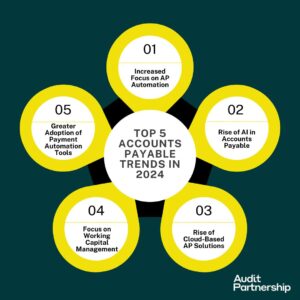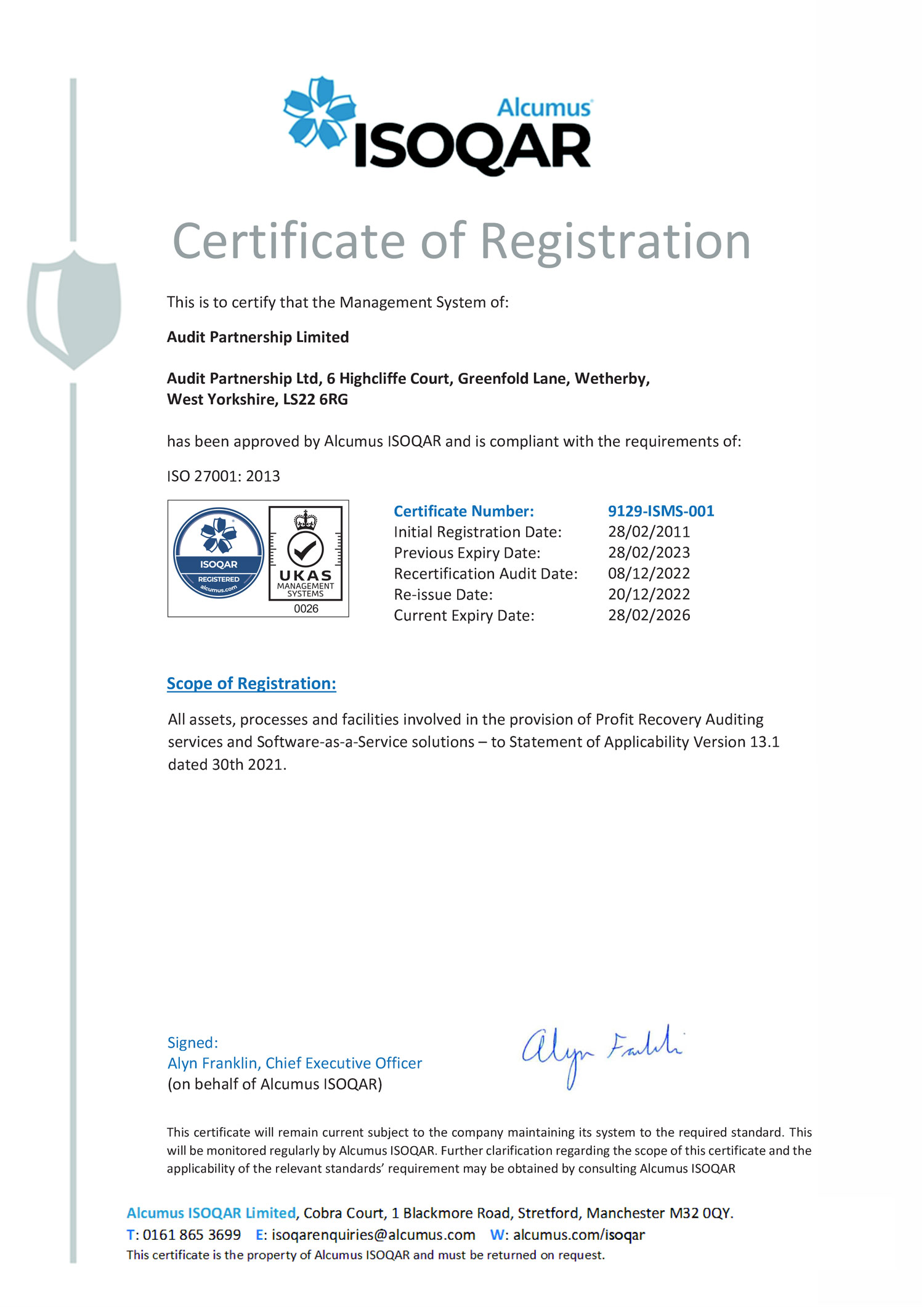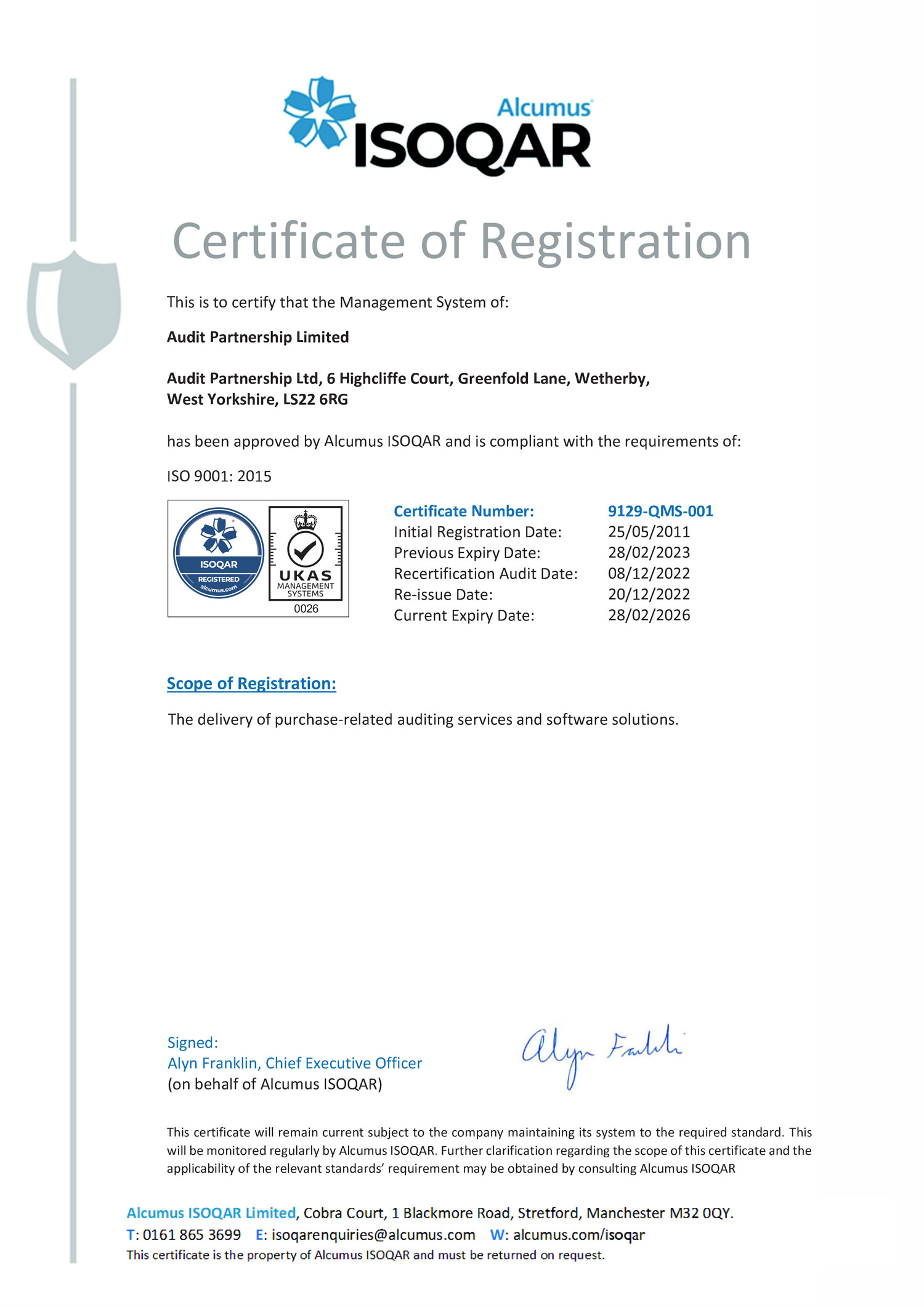
Accounts Payable (AP) teams play a significant role in managing cash flow and vendor relationships for businesses. As technology advances, new trends are emerging in the way AP functions. This blog discusses the top 5 Accounts Payable trends to grow in importance during 2024 and beyond.
Top 5 Accounts Payable Trends in 2024
The Accounts Payable (AP) function has seen significant changes over the past few years due to technological advancements and changing business needs. As we look ahead to 2025, several key trends are emerging that will continue shaping the future of Accounts Payable management.
Here are the top 5 Accounts Payable trends expected to impact organisations in the coming year.

1. Increased Focus on Accounts Payable Automation
One of the biggest Accounts Payable trends we will see continue to gain momentum is the increased focus on automating manual AP processes. Manual processes are time-consuming, error-prone, and inefficient.
They also make it difficult for finance teams to gain real-time visibility into cash flow. As businesses look for ways to streamline operations and reduce costs, automating Accounts Payable will be a top priority.
We expect to see more companies investing in AP automation solutions that can digitise invoice receipts, approval workflows, payments, and vendor management. Fully automated systems allow invoices to be processed in bulk rather than one by one, reducing processing time significantly.
They also eliminate data entry errors and provide built-in controls to flag anomalies. As AP automation becomes more sophisticated, it will free up staff to focus on more strategic work rather than manual transaction processing. Automation will certainly be one of the defining Accounts Payable trends over the next year.
2. Rise of Artificial Intelligence in Accounts Payable
Artificial intelligence (AI) is poised to make a big impact on Accounts Payable teams in 2024. AI capabilities are being integrated into AP automation solutions to take automation to the next level.
For example, AI can be used for invoice classification – it can learn from past invoices to automatically classify new invoices based on attributes like vendor, amount, invoice date, etc. This eliminates the need for manual review and coding of each document.
AI is also enabling new capabilities like invoice extraction and data capture from unstructured documents like PDFs and emails. By leveraging computer vision and natural language processing, AI solutions can extract key information from invoices without any manual input.
This will make the invoice matching process even more touchless. As AI becomes more sophisticated, we will see it augmenting human work by enabling capabilities like predictive analytics.
It will help AP professionals proactively manage cash flow, identify anomalies and fraud patterns, and optimise payment terms. AI will certainly be one of the defining Accounts Payable trends over the next year.
3. Rise of Cloud-Based Accounts Payable Solutions
The shift to cloud-based solutions continues across various business functions, and Accounts Payable is no exception. Cloud-based AP systems offer compelling benefits like scalability, mobility, and lower total cost of ownership.
Cloud models allow AP teams to access systems from anywhere using an internet connection. This brings greater flexibility, especially for decentralised or remote teams. The cloud also makes it easier for companies to integrate AP systems with other key applications in their technology stack.
Updates are handled in the background by the vendor, so users always have access to the latest features and security patches. Overall, cloud-based AP solutions are proving more cost-effective compared to on-premise models over the long run due to lower upfront costs and predictable subscription-based pricing
4. Increased Focus on Working Capital Management
Another emerging Accounts Payable trend is the growing focus on optimising working capital through improved financial management. As inflation puts pressure on costs, companies are looking to squeeze more cash from existing current assets and liabilities.
This is driving increased focus on working capital metrics like days payable outstanding (DPO). Leveraging AP automation, companies will look to optimise payment terms with suppliers, take advantage of early payment discounts, and better manage cash flow.
Adopting e-invoicing standards can also help drive down DPO. E-invoicing streamlines invoice receipt, approval and ensures timely processing and payment. It removes manual touchpoints and dependencies. With real-time payment data available, companies will be able to gain deeper insights into cash flow patterns.
This will help them make data-driven decisions around strategy, payment terms negotiation, and cash forecasting – all contributing to enhanced working capital management.
5. Greater Adoption of Payment Automation Tools
Rounding out the top Accounts Payable trends for 2024 is the increased adoption of payment automation tools that leverage electronic payment methods. While cheque and wire payments still dominate for now, their usage is declining.
Faster payment options like virtual cards and same-day ACH (Automatic Clearing House) are gaining momentum due to their speed, security and ability to optimise cash management.
Leveraging payment automation, companies can gain full visibility and control over payment execution. They can set predefined payment rules, attach remittance details electronically, and track payment status in real-time.
This level of control and transparency is not possible with paper-based payments. Automated payment tools also eliminate manual touchpoints like printing, signing and mailing cheques . As AP teams look to further streamline processes, we will see greater emphasis on payment solutions that leverage emerging payment rails.
Get the best AP services from Audit Partnership
Audit Partnership offer an end-to-end recovery audit solution that i’s designed to maximise recoveries and minimise any disruption to your teams. Through a
dynamic blend of expert auditors and our in-house developed software, CaptureTM we deliver unparalleled coverage, detecting and recovering all types of errors.
Conclusion
The top 5 Accounts Payable trends for 2024 include increased automation of routine tasks, transition to electronic billing and e-invoicing, use of data analytics for strategic insights, adoption of automated cash flow management tools, and greater role of AI in reporting and analytics.
By embracing these emerging Accounts Payable trends, finance departments can derive significant benefits like improved efficiency, cost savings, better cash flow and visibility into business spending. It will be an exciting year ahead as technology continues transforming accounts payableAccounts Payable functions at a rapid pace.
Frequently Asked Questions (FAQs) – Accounts Payable Trends in 2024
1. What is Accounts Payable (AP)?
Accounts payable, also known as AP, refers to the financial function responsible for paying bills and invoices on time for goods and services a company has received from its vendors.
2. What are the top 5 Accounts Payable trends for 2024?
The top 5 trends are increased focus on AP automation, rise of artificial intelligence, shift to cloud-based solutions, increased focus on working capital management, and greater adoption of payment automation tools.
3. What are the benefits of AP automation?
Automating AP processes can reduce processing time significantly, eliminate data entry errors, provide built-in controls, and free up staff to focus on more strategic work. It allows invoices to be processed in bulk rather than one by one.
4. How can AI impact Accounts Payable functions?
AI can enable capabilities like invoice extraction from documents, automatic invoice classification, predictive analytics for cash flow and fraud detection, and augmenting human work. This can further enhance the automation of routine AP tasks.
5. What are the advantages of cloud-based AP solutions?
Cloud models offer scalability, mobility, lower costs over time due to predictable subscription pricing, easier integration with other systems, and automatic access to latest features and security updates.














